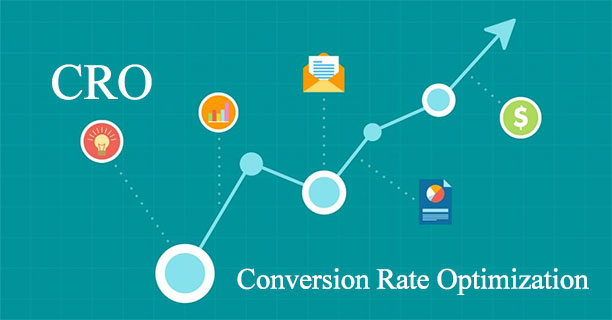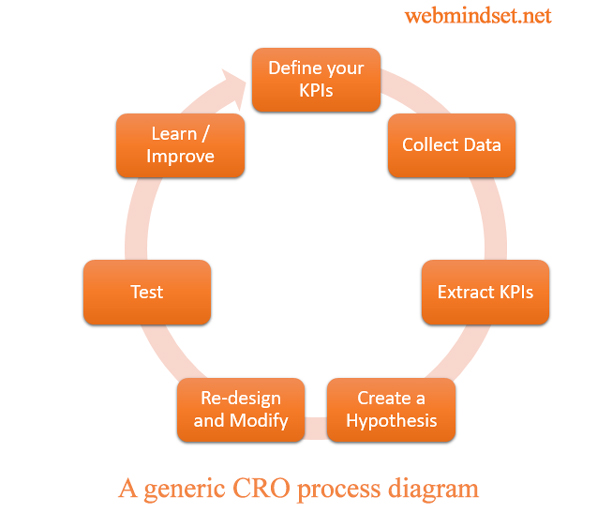Note: This article is part of a collection of articles about the Key Performance Indicators in content marketing.
Definition of Conversion Rate
A well-designed content marketing plan is not just aiming at higher traffic. Unless you build your business on an advertising-based revenue model, higher traffic would not necessarily lead to higher sales revenue.
Thus, we need some Key Performance Indicators (KPIs) to measure the actual business impact of our content marketing activities.
As every financial expert is always asking about ROI (Return on Investment), every content marketer should be concerned about conversion rates.
Here you can find a simple yet precise definition of conversion rate:
The conversion rate is the proportion of visitors to a website who take action to go beyond a casual content view or website visit, as a result of subtle or direct requests from marketers, advertisers, and content creators (+).
I’d prefer to make the above definition a little broader by substituting visitors to a website with audience reached, as reaching the audience for an online campaign could even be achieved via an Ad in a local newspaper.
Also, to use the previous definition, we need to clarify the meaning of the term action.
Conversion Rate Classification
Most of the content marketers prefer to divide conversion rates into two different categories:
- Primary Conversion Rates
- Secondary Conversion Rates
With primary conversion rate, we look for every action leading to the ultimate goal of the campaign. If we have run a campaign to raise money for a charity, the final question is crystal clear:
What percentage of the content consumers or website visitors have finally donated something to the charity?
The above example a very simple case of primary conversion rate. Sure you can define many other primary conversion rates (e.g., What percentage of female visitors purchased our product).
The secondary conversion rates measure other actions which may / may not lead to final conversions, such as:
- Percentage of the newsletter subscribers (comparing to the total visitors of subscription pop-up)
- Percentage of the newsletter receivers who have followed our Facebook account
- Percentage of the post visitors who have downloaded our catalog
Usually, in a smooth non-turbulent business environment, after a couple of months, a causal or correlational relationship between primary and secondary conversions rates would emerge. However, in the current unstable digital market, many times it’s not so easy to extract a direct relationship between primary and secondary conversion rates.
Therefore, most of the content marketers define a separate collection of conversion rates as key performance indicators and hope to find some clues for recognizing the most reliable ones and removing the rest from the list.
Definition of Conversion Rate Optimization (CRO)
If you have defined specific KPIs for your online performance, CRO can be employed as an approach to improving your KPIs using a systematic approach based on user behavior, general recommendations and even trial and error.
Using CRO, you do not aim at increase visitor traffic. Instead, concentrate your efforts on improving your gain from already existing visitor base.

All-in-One articles about Conversion Rate Optimization
Most of the All-in-One articles are very basic and are just designed for providing you with introductory information. Thus, they are not the best choice if you are willing to deep dive into the story.
So if you are looking for some brief information about CRO, the following articles are the best ones I have found one the web:
- Moz: The definitive how-to guide for conversion optimizations
- Nail Patel: Another definitive guide for conversion optimization
- A very introductory article from creative thirst: CRO is not SEO (and some other points)
Conversion Rate Optimization Tips, Tricks, and Technics
From the most to the least comprehensive:
- Backlinko: 100 practical tips and tricks for CRO
- Kissmetrics: 100 conversion optimization case studies
- Impactbnd: Top Conversion Optimization Tools
- HubSpot: Conversion Rate Optimization tools for research, feedback, and analytics
- Crazyegg: A 45-point CRO checklist
Complementary and alternative approaches to CRO
- Conversion Volume Optimization (CVO) as an alternative to CRO
- A significant note from Hubspot: Conversion Rate Optimization best practices are not always the best
- Kissmetics: There are many misconceptions about Conversion Rate Optimization
Selected books on Conversion Rate Optimization
-
Conversion Optimization: The Art and Science of Converting Prospects to Customers (Amazon Link)
-
The Conversion Code: Capture Internet Leads, Create Quality Appointments, Close More Sales (Amazon Link)
-
Landing Page Optimization: The Definitive Guide to Testing and Tuning for Conversions (Amazon Link)
- Convert Every Click (Amazon Link)







